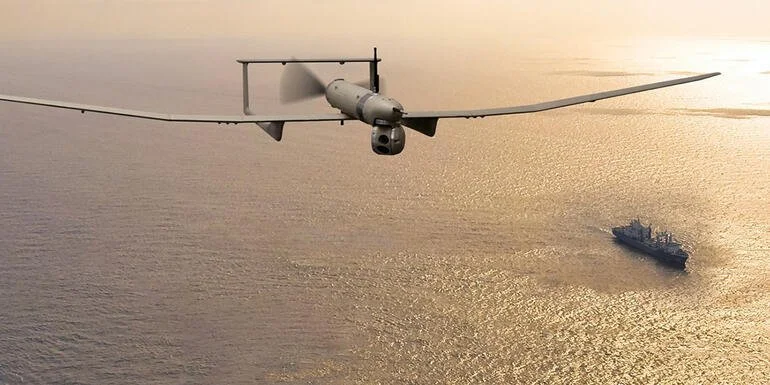Airbus Defence & Space at the Paris Air Show 2025
/Jean-Brice Dumont, Head of Power Airbus Military & Space, and Alain Fauré, Head of Space Systems, presented Airbus news at the Paris Air Show.
As the international situation calls on European countries to improve their military capacity and strategic autonomy, which of course includes the defense industry, they took stock of major military programs: aircraft, satellites, drones and high altitude platforms.
A400M
A400M is often the subject of lengthy discussions. The nations in the Airbus consortium, especially France and Spain, signed an agreement on 16 June 2025 to support the production of A400M, with a production rate of 8 per year.
Thales will deliver a satellite cockpit communications system (Satcom) to be installed in the military transport aircraft.
The future of the A400M will only be assured if its export outside the consortium eventually develops...
A330 MRTT
MRTT+
The MRTT+ program works: it is a NEO version of the MRTT. Airbus was not ready for a presentation at the Paris Air Show 2025, but the first MRTT+ is in production. The aim is to deliver it by the end of 2028.
"More generally," said Jean-Brice Dumont, "we have an ambitious product policy with MRTT and MRTT+. What you saw on the A400M, connectivity, the ability to exchange data, play a common and controlling role, is also key to MRTT+. It's very complementary, if you will.”
FCAS/NGWS Program
Next Generation Weapon System (NGWS) and FCAS (Future Combat Air System) - more generally the concept of next generation weapons, NGWS being the tri-national program. The goal of this program is to achieve new capabilities for the three nations by 2040. Airbus is a key industrial partner, currently in the early stages of Phase 1B: “On Paper” technology demonstration phase. The next phase will be phase 2 on hardware: this will be the concrete part of the technology demonstration, with flights in particular in the second half of this decade.
"In this phase 2, we will have to demonstrate connectivity and a system of systemic principles, which means connected platforms," said Jean-Brice Dumont. We need to demonstrate the technology of an airplane, of a next-generation fighter, and we need to demonstrate the technology of a vehicle in the air, also known as a real carrier. That's what we need to do with the NGWS and we need to move faster."
Eurodrone
eurodrone
Speaking of this large drone that purports to be a competitor of the General Dynamics Reaper, Jean-Brice Dumont said "we are now in phase 1A and we will soon enter phase 1B, for a still planned entry into service at the end of the decade. We need to determine what kinds of missions need to be considered, particularly in the maritime environment, and who are the countries concerned? India, Japan and other countries are interested in Eurodrone. We must therefore decide what this program will be, in terms of contributors and missions, until the end of its development”.
SIRTAP
sirtap
The SIAE was the occasion for Airbus to announce the launch at the end of the year of a prototype of SIRTAP, the small Spanish drone manufactured in Getafe (near Madrid). Deliveries are expected in the first half of 2026.
ALIACA
aliaca
Manufactured by Airbus subsidiary Survey Copter, which specializes in the design of lightweight tactical drone systems, a Vertical Take-off and Landing (VTOL) version was presented at SOFINS in April 2025. There is a reflection underway on the VTOL version of the ALIACA and on the somewhat larger drone named CAPA-X.
Target drones
Little is said about Airbus “niche business” of mission-critical drones.
These are drones that train fighters and, in addition, that are used as a test “sanbox” to develop mission software: this allows us to study what a drone of this size could do.
The DO-DT25 drone, originally a Dornier model, flies at Mach 0.5 and serves as a target.
In response to the increasing use of suicide bombers, Airbus has officially introduced its low observable autonomous drone (LOAD) air defense application.
Finally the ZEPHYR is the program of very high altitude and very long endurance. Thanks to its solar cells on the wings, which recharge during the day and discharge during the night, Zephyr flies almost infinitely (record 67 days of flight).
Its missions can bring it closer to satellites and bring complementarities: observation, intelligence, signal, connectivity for the military and for the CPU (Central Processing Unit), etc.
https://www.airbus.com/en/products-services/defence
Crédits photos: Airbus + AE

















